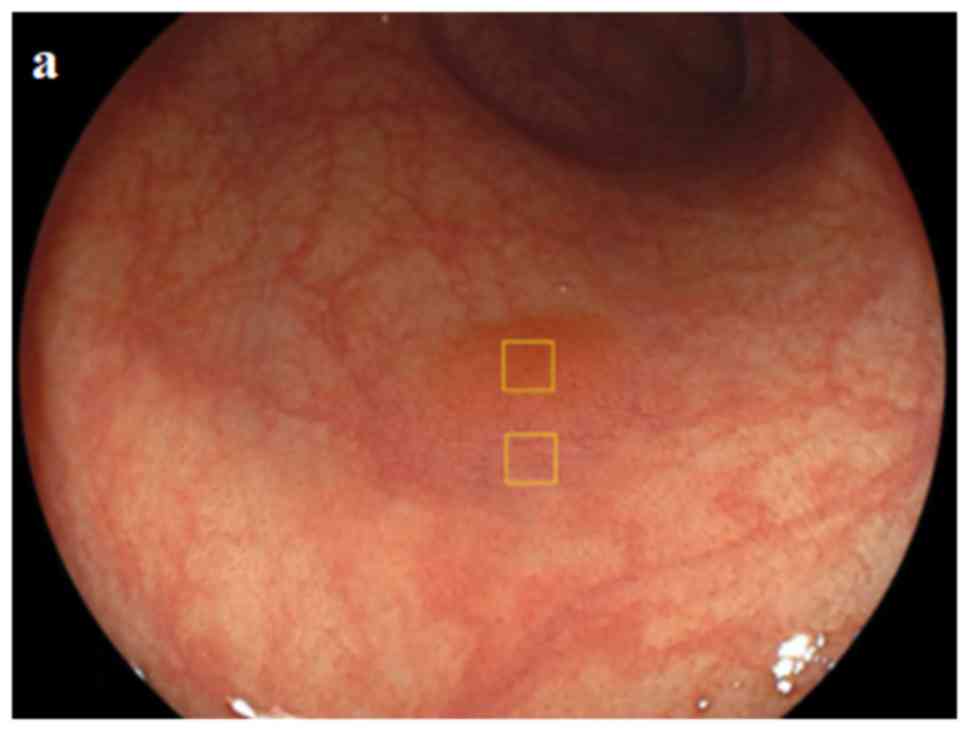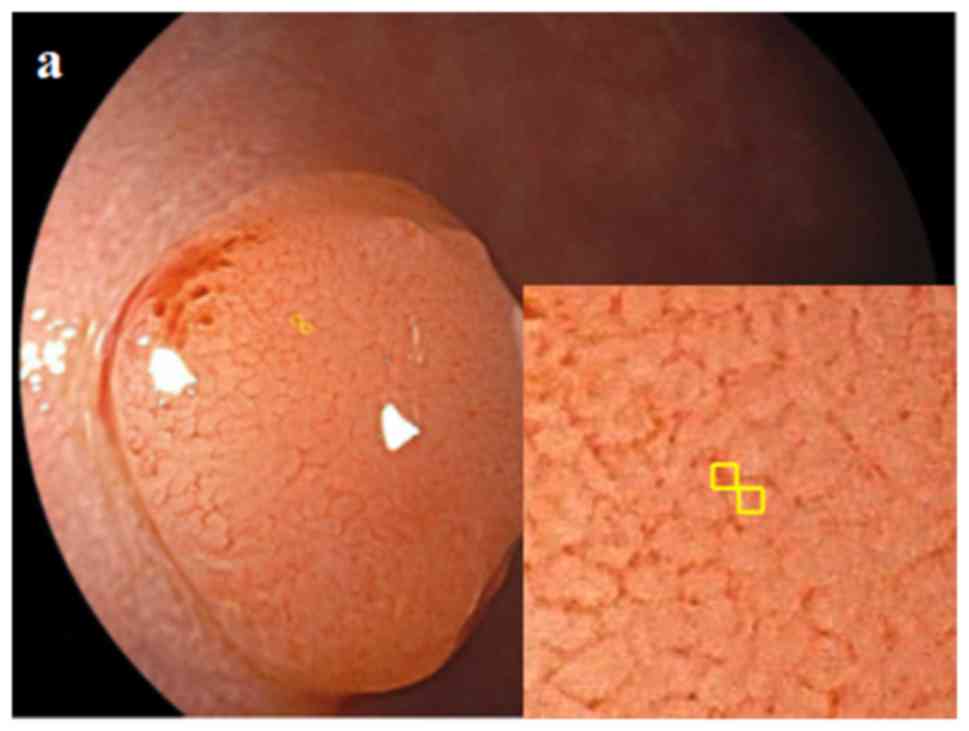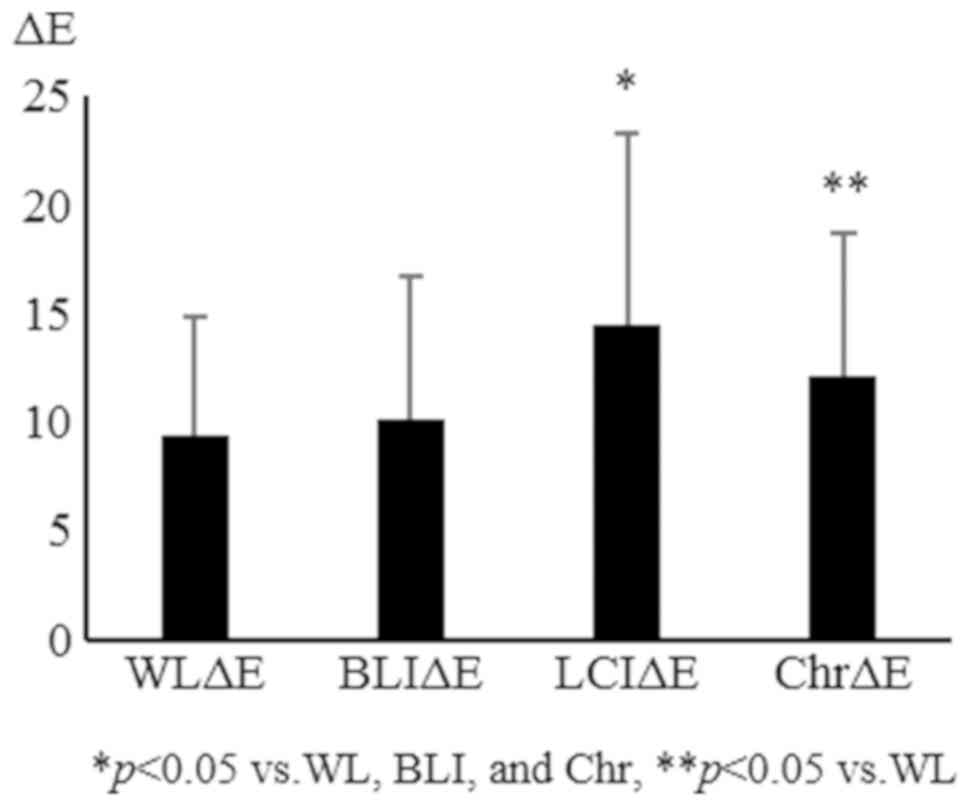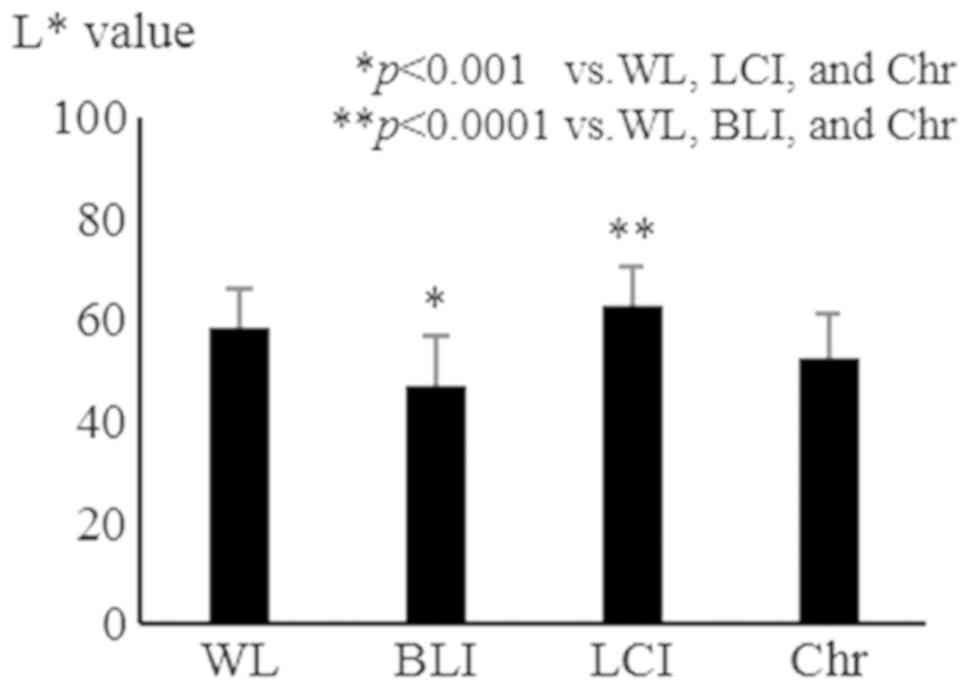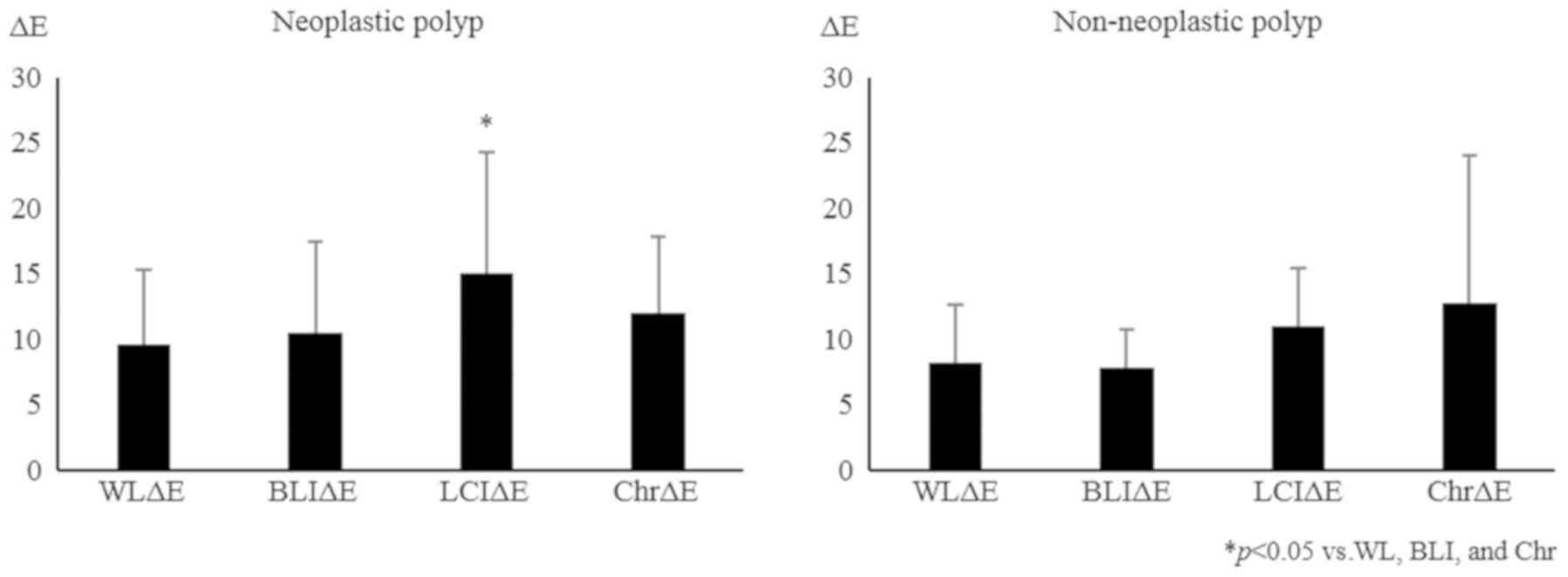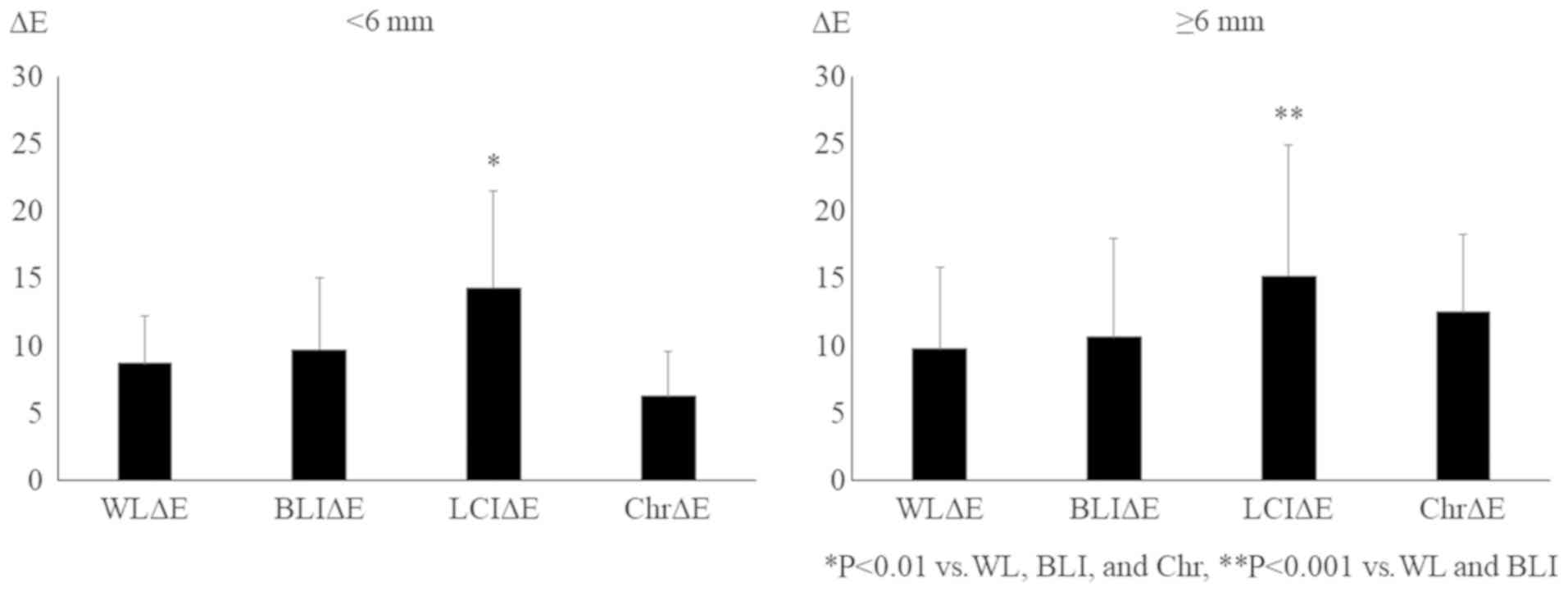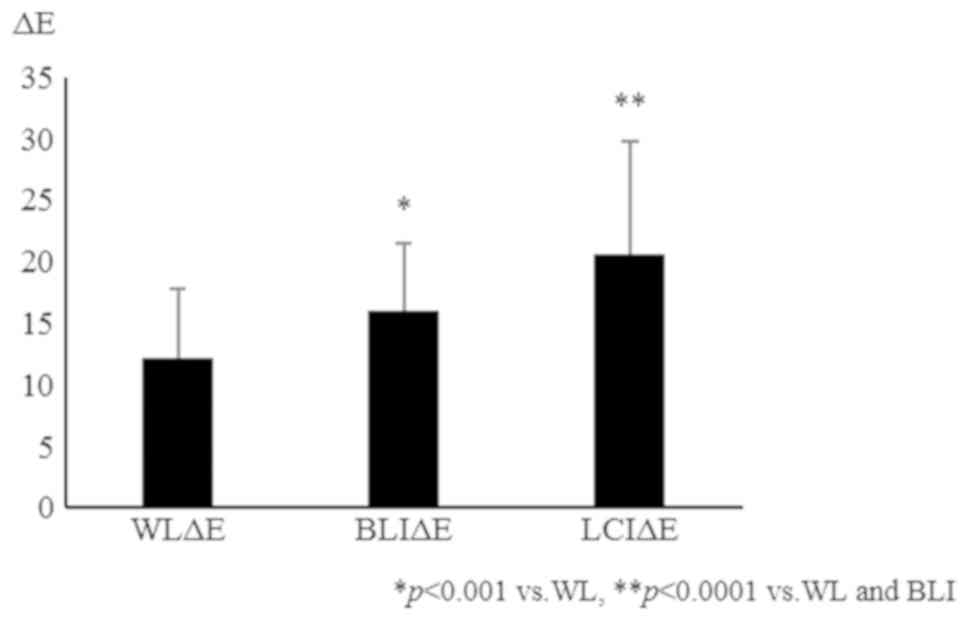|
1
|
Winawer SJ and Zauber AG: Colonoscopic
polypectomy and the incidence of colorectal cancer. Gut.
48:753–754. 2001. View Article : Google Scholar : PubMed/NCBI
|
|
2
|
Winawer SJ, Zauber AG, Ho MN, O'Brien MJ,
Gottlieb LS, Sternberg SS, Waye JD, Schapiro M, Bond JH, Panish JF,
et al: Prevention of colorectal cancer by colonoscopic polypectomy.
The national polyp study workgroup. N Engl J Med. 329:1977–1981.
1993. View Article : Google Scholar : PubMed/NCBI
|
|
3
|
Kaminski MF, Wieszczy P, Rupinski M,
Wojciechowska U, Didkowska J, Kraszewska E, Kobiela J, Franczyk R,
Rupinska M, Kocot B, et al: Increased rate of adenoma detection
associates with reduced risk of colorectal cancer and death.
Gastroenterology. 153:98–105. 2017. View Article : Google Scholar : PubMed/NCBI
|
|
4
|
Tada M, Katoh S, Kohli Y and Kawai K: On
the dye spraying method in colonofiberscopy. Endoscopy. 8:70–74.
1977. View Article : Google Scholar : PubMed/NCBI
|
|
5
|
Tada M and Kawai K: Research with the
endoscope: New techniques using magnification and chromoscopy. Clin
Gastroenterol. 15:417–437. 1986.PubMed/NCBI
|
|
6
|
Brooker JC, Saunders BP, Shah SG, Thapar
CJ, Thomas HJ, Atkin WS, Cardwell CR and Williams CB: Total colonic
dye-spray increases the detection of diminutive adenomas during
routine colonoscopy: A randomized controlled trial. Gastrointest
Endosc. 56:333–338. 2002. View Article : Google Scholar : PubMed/NCBI
|
|
7
|
Inoue T, Murano M, Murano N, Kuramoto T,
Kawakami K, Abe Y, Morita E, Toshina K, Hoshiro H, Egashira Y, et
al: Comparative study of conventional colonoscopy and pan-colonic
narrow-band imaging system in the detection of neoplastic colonic
polyps: A randomized, controlled trial. J Gastroenterol. 43:45–50.
2008. View Article : Google Scholar : PubMed/NCBI
|
|
8
|
Ng SC and Lau JY: Narrow-band imaging in
the colon: Limitations and potentials. J Gastroenterol Hepatol.
26:1589–1596. 2011. View Article : Google Scholar : PubMed/NCBI
|
|
9
|
Okada M, Sakamoto H, Takezawa T, Hayashi
Y, Sunada K, Lefor AK and Yamamoto H: Laterally spreading tumor of
the rectum delineated with linked color imaging technology. Clin
Endosc. 49:207–208. 2016. View Article : Google Scholar : PubMed/NCBI
|
|
10
|
Yoshida N, Naito Y, Murakami T, Hirose R,
Ogiso K, Inada Y, Dohi O, Kamada K, Uchiyama K, Handa O, et al:
Linked color imaging improves the visibility of colorectal polyps:
A video study. Endosc Int Open. 5:E518–E525. 2017. View Article : Google Scholar : PubMed/NCBI
|
|
11
|
Min M, Deng P, Zhang W, Sun X, Liu Y and
Nong B: Comparison of linked color imaging and white-light
colonoscopy for detection of colorectal polyps: A multicenter,
randomized, crossover trial. Gastrointest Endosc. 86:724–730. 2017.
View Article : Google Scholar : PubMed/NCBI
|
|
12
|
Sato Y, Sagawa T, Hirakawa M, Ohnuma H,
Osuga T, Okagawa Y, Tamura F, Horiguchi H, Takada K, Hayashi T, et
al: Clinical utility of capsule endoscopy with flexible spectral
imaging color enhancement for diagnosis of small bowel lesions.
Endosc Int Open. 2:E80–E87. 2014. View Article : Google Scholar : PubMed/NCBI
|
|
13
|
Rex DK, Cutler CS, Lemmel GT, Rahmani EY,
Clark DW, Helper DJ, Lehman GA and Mark DG: Colonoscopic miss rates
of adenomas determined by back-to-back colonoscopies.
Gastroenterology. 112:24–28. 1997. View Article : Google Scholar : PubMed/NCBI
|
|
14
|
Bensen S, Mott LA, Dain B, Rothstein R and
Baron J: The colonoscopic miss rate and true one-year recurrence of
colorectal neoplastic polyps. Polyp prevention study group. Am J
Gastroenterol. 94:194–199. 1999. View Article : Google Scholar : PubMed/NCBI
|
|
15
|
Hurlstone DP, Cross SS, Slater R, Sanders
DS and Brown S: Detecting diminutive colorectal lesions at
colonoscopy: A randomised controlled trial of pan-colonic versus
targeted chromoscopy. Gut. 53:376–380. 2004. View Article : Google Scholar : PubMed/NCBI
|
|
16
|
Le Rhun M, Coron E, Parlier D, Nguyen JM,
Canard JM, Alamdari A, Sautereau D, Chaussade S and Galmiche JP:
High resolution colonoscopy with chromoscopy versus standard
colonoscopy for the detection of colonic neoplasia: A randomized
study. Clin Gastroenterol Hepatol. 4:349–354. 2006. View Article : Google Scholar : PubMed/NCBI
|
|
17
|
Ogiso K, Yoshida N, Siah KT, Kitae H,
Murakami T, Hirose R, Inada Y, Dohi O, Okayama T, Kamada K, et al:
New-generation narrow band imaging improves visibility of polyps: A
colonoscopy video evaluation study. J Gastroenterol. 51:883–890.
2016. View Article : Google Scholar : PubMed/NCBI
|
|
18
|
Yoshida N, Hisabe T, Hirose R, Ogiso K,
Inada Y, Konishi H, Yagi N, Naito Y, Aomi Y, Ninomiya K, et al:
Improvement in the visibility of colorectal polyps by using blue
laser imaging (with video). Gastrointest Endosc. 82:542–549. 2015.
View Article : Google Scholar : PubMed/NCBI
|
|
19
|
Togashi K, Nemoto D, Utano K, Isohata N,
Kumamoto K, Endo S and Lefor AK: Blue laser imaging endoscopy
system for the early detection and characterization of colorectal
lesions: A guide for the endoscopist. Therap Adv Gastroenterol.
9:50–56. 2016. View Article : Google Scholar : PubMed/NCBI
|
|
20
|
Nakano A, Hirooka Y, Yamamura T, Watanabe
O, Nakamura M, Funasaka K, Ohno E, Kawashima H, Miyahara R and Goto
H: Comparison of the diagnostic ability of blue laser imaging
magnification versus pit pattern analysis for colorectal polyps.
Endosc Int Open. 5:E224–E231. 2017. View Article : Google Scholar : PubMed/NCBI
|
|
21
|
Yoshida N, Yagi N, Inada Y, Kugai M,
Okayama T, Kamada K, Katada K, Uchiyama K, Ishikawa T, Handa O, et
al: Ability of a novel blue laser imaging system for the diagnosis
of colorectal polyps. Dig Endosc. 26:250–258. 2014. View Article : Google Scholar : PubMed/NCBI
|















